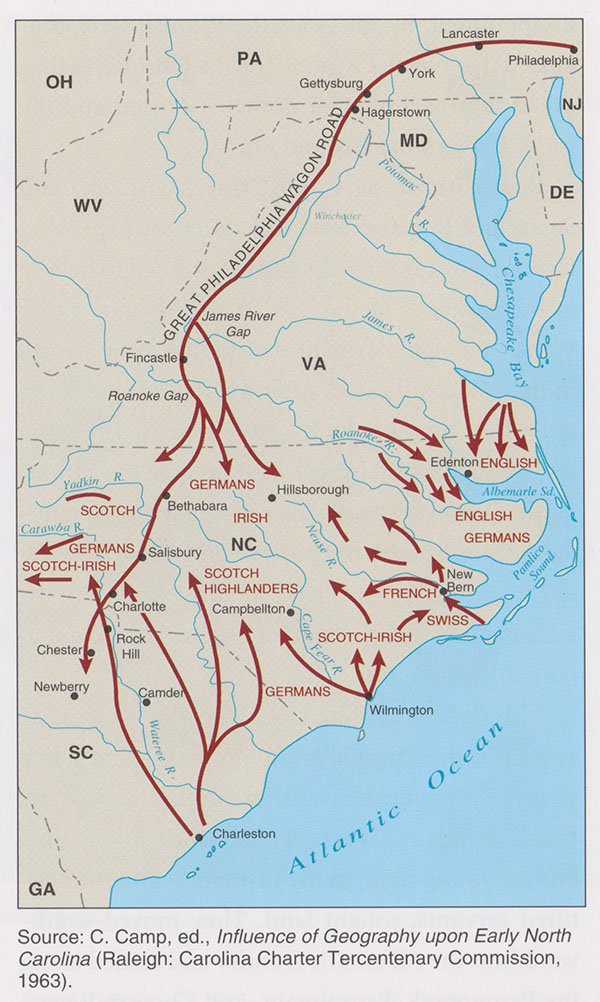Development of the Frontier, 1657 - 1835
During the late 17th century, settlement in North Carolina proceeded from Virginia migration, first into the Albemarle region, then into the Pamlico district. By 1710, the new sparsely settled province had a capital at Edenton. But the migration caused growing alarm among the Indian populations resulting in a conflict that raged on and off for four years concluding in 1715 with the decimation of the Indians and the opening up of additional land to white settlement. The key event that affected the colony’s development until the time of the Revolution was King George II’s takeover of North Carolina from the heirs of the Lords Proprietors in 1729. The change generated a land bonanza in the colony as the Crown eased land purchase requirements and sent out the equivalent of real estate agents to drum up business. Their work, and the encouragement of royal governors, touched off a boom in North Carolina that lasted from 1730 to the American Revolution. Forests along the Coastal Plain were leveled for farms, settlers poured into the backcountry, and the line of settlement extended to the Blue Ridge Mountains.

Avenues of Early Settlement

The origins of North Carolina’s 18th-century newcomers varied widely. South Carolinians moved north into the Lower Cape Fear region to establish pine plantations with enslaved African labor. As land grew scarce in Pennsylvania, Maryland, and Virginia after 1730, migrants trekked down the Great Wagon road which began near Philadelphia and extended southwestward to the Shenandoah Valley before veering east into the North and South Carolina Piedmont. These newcomers included a variety of ethnic and religious groups, including Quakers, German Lutherans, German Moravians, and Scot-Irish Presbyterians and Baptists. Settling primarily in the Piedmont, they contrasted with the mostly English and African coastal areas and, in fact, had little contact with those areas. The rivers of the Piedmont flowed into the South Carolina colony and that is the route commerce and communication followed as well. By themed-eighteenth century residents of Piedmont North Carolina had more contacts with Pennsylvania than they did with the coastal district of their own colony.
European and African Settlement in 1730
In 1730, the colony’s population included 30,000 whites and 6,000 blacks, almost all of whom lived along the Coastal Plain; by 1775, the population had grown to 265,000 inhabitants, including 10,000 blacks, and settlement was scattered from the coast to the mountains. By that latter date, North Carolina was the fourth most populous of the thirteen colonies. The population was also among the most diverse with some estimates placing the German population as high as 30 percent.
